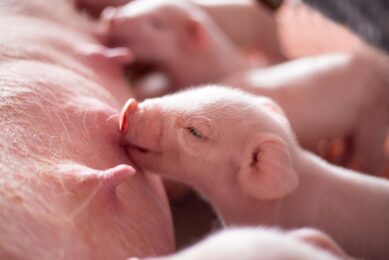5 reasons why weaning age will come down

What is the ideal weaning age for pigs? Over the years expert columnist John Gadd observed that thinking about this has shown a tendency of ebb and flow. He explains where the next wave will take us.
EXPERT
Several years ago we had a popular programme on the BBC where acknowledged authorities provided a ‘Brains Trust’ to answer a whole variety of questions on life affecting us. The expert’s replies invariably commenced with “Well – it all depends!”
I find myself in the same position when thinking about when is the best time to wean today – it does depend on a whole variety of things. I have a thick file on the subject and 80% of the advice is now out of date because so much has changed over the past 15 years.
Past trends
A journey through the history of weaning reveals the ebb and flow of when is the best age to wean. Overall the trend has been to concentrate on weight rather than age, or more pragmatically ‘weight for age’.
25 years ago most people weaned at 21 days and as near 5.5 kg as possible. The intention was to balance getting the sow back into production quickly with as little post-weaning check to growth as could be managed. In the light of knowledge and the standard of stockmanship at the time, the results weren’t all that good, so when the Americans came up with the Very Early Weaning (VEW) idea (12 to 18 days), into sophisticated accommodation, this was tried by ordinary breeders.
But within 2 years it fell by the wayside due to cost overriding the theoretical benefit of turning over the farrowing index much more quickly. In fact VEW sows began to farrow poor subsequent litters due to their womb wall not regenerating (blastocyst receptivity) quickly enough, aggravated by stress in the weaning-to-service period. And the average stockperson didn’t keep things clean enough, so very-early weaning mortalities of over 20% were far too high.
28 (sometimes 35) day weaning
The result was a move to weaning when the piglets were heavier/strong enough – 6 kg plus, and the sows found it easier to recover into re-breeding mode. The extra costs of ensuring more farrowing/sow/year was now overridden by weaners getting to slaughter between 5 to 12 days quicker with the cost savings provided by this quicker getaway after weaning. The pigs were less trouble to wean too, and the sows easier to rebreed. This is more or less where we are now, except we have much better early diets and more skilled, attentive stockmanship, so current advice on weaning age and weight has settled at 28 days and 7.5 kg.
I forecast another change…
…to earlier weaning once more, at possibly 15-18 days at 4.5 to 5 kg. Is this a prophetic forecast, or too optimistic, or impractical? I base my suggestions on the following changes happening now.

Taking decisions on weaning capacity rather than the current fashion for ‘pigs weaned per sow per year’. Weaning capacity takes account of ‘Sow Productive Life’ and measures the weight of piglets weaned over a sow’s productive lifetime. At present 500-550 kg is the target (e.g. 7.25 kg weaning weight and 5.8 litters per sow lifetime). This is significant as generally each kg heavier at weaning is worth 7 to 12 days quicker to slaughter. Also, Sow Productive Life is becoming increasingly important as gilts, sow housing and the feed they need become more expensive. So choosing the gene lines which spread these costs over a sow’s longer life as revealed by weaning capacity is good business.

The past early-weaning hurdle of baby pig nutrition is well and truly overcome. And there is equipment available now to sustain the increased litter sizes modern genetics are affording us.

Photo: Michel Zoeter

Stockmanship training is far, far better in some countries than it was 10 years ago, so being able to practise the increased skills which have always been essential with an earlier weaning age. Cross-fostering is not the bogeyman it once was, due to better training.

The cost of good housing is rocketing, so the more pigs which pass over expensive floor space the better. Earlier weaning will help.

As will longer sow productive lives to spread the cost of replacing them. We are now much better aware of what affects reproductive regeneration with today’s larger litters and how to improve days to successful service. So listen to the veterinary physiologists on the technology involved.
My conclusions
The go-ahead and probably larger commercial pig breeders will manage to wean earlier than at present, with little or no post-weaning check. Those with more limited capital and less skilled staff will find it safer to continue with 7.5 kg weaning weights (but arguably less cost-effective?) getting them there as soon as they can – but still managing to keep the hard-pushed sows in trim.











